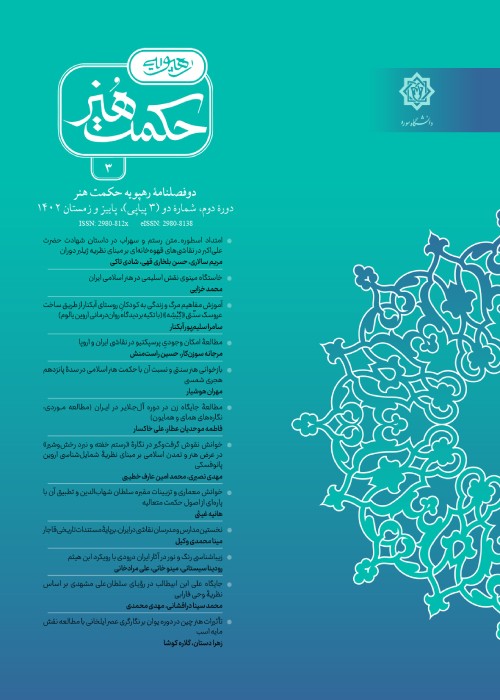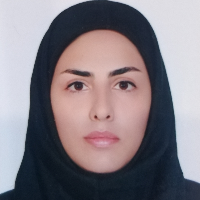Tracing Neo-Traditionalism in Twelve Paintings from the Saqqakhaneh Movement
Throughout its history, modern Iranian art saw the rise of several movements that, influenced as much by modernist ideas as values of the past, aspired to develop a “national art.” At the core of these movements was a neo-traditionalist approach that presented a contemporary take on the hallmarks of Iranian traditional arts while emphasising a native character, an approach that paved the way for the Saqqakhaneh movement of the 1960s.Aiming to understand Saqqakhaneh artworks better, this paper explores what neo-traditionalism meant in that movement. The article’s main question is: “What visual elements connect Saqqakhaneh paintings to neo-traditionalism and how?” Conducted as qualitative and descriptive-analytical research, the study looked at paintings by Sadegh Tabrizi, Hossein Zenderoudi, Faramarz Pilaram, Mansoor Ghandriz, Nasser Ovissi, and Massoud Arabshahi, selected through stratified random sampling.The analysis found that the artists crafted a novel artistic language upon their contemporary interpretations of traditional culture, forging a structural interaction between modern art and Iranian decorative art: Hossein Zenderoudi embodied neo-traditionalism in his works by showcasing the visual potentials of Persian calligraphy, as well as by taking familiar Saqqakhaneh motifs and arranging them regardless of their naturalistic qualities and their meanings. Similarly, neo-traditionalism manifests itself in the works of Faramarz Pilaram through the artist’s novel approach to calligraphy. Pilaram treated the Shekasteh-Nastaliq script as raw artistic material, harmonising calligraphic strokes into figurative art. Another neo-traditionalist feature of his works is the use of the colour gold, which hallmarks his style. Mansoor Ghandriz developed a style of abstract iconography that drew on folk symbolism, creating a medium for neo-traditionalism. Inspired by modernist ideas, he also experimented with an intuitive approach to art. His work reflects an effort to reconcile the aesthetics of abstract painting with Persian artistic traditions. Nasser Ovissi expressed his neo-traditionalist approach by bringing mythical symbolism and lyrical themes into a modernist setting and also by incorporating the aesthetics of different Persian miniature painting styles into a cohesive whole. Sadegh Tabrizi built his style upon a personal interpretation of the aesthetics of Persian miniature. Lastly, Massoud Arabshahi represented neo-traditionalism in a modernist form that he developed by revisiting the ancient world through Eastern eyes.Neo-traditionalism was thus realised in the art of Saqqakhaneh painters, who revealed in their unique works the visual potentials found throughout the history of Persian art. To answer the research question, which concerns how neo-traditionalism is represented in Saqqakhaneh paintings, the paper analyses twelve paintings from the movement and shows that certain elements from Iranian visual culture—including Siyah mashq (calligraphic practice sheets), imagery from Iranian folk literature, Islamic imagery, and aesthetic characteristics of Persian miniature traditions—are rendered in a modern artistic language. Relying on their distinct interpretations of cultural imagery, Saqqakhaneh artists pioneered a particular form of Iranian modernism using a traditional visual vocabulary.Conceptually overlapping with postmodernism, neo-traditionalism reveals a tendency towards postmodern art and, in general, qualifies stylistically and content-wise as a pluralist approach. On a deeper level, however, attention to a native and national identity is the defining feature of neo-traditionalism, which aims to tailor tradition to the tastes of the contemporary viewer by blending familiar traditional imagery with modern styles of representation.
- حق عضویت دریافتی صرف حمایت از نشریات عضو و نگهداری، تکمیل و توسعه مگیران میشود.
- پرداخت حق اشتراک و دانلود مقالات اجازه بازنشر آن در سایر رسانههای چاپی و دیجیتال را به کاربر نمیدهد.




